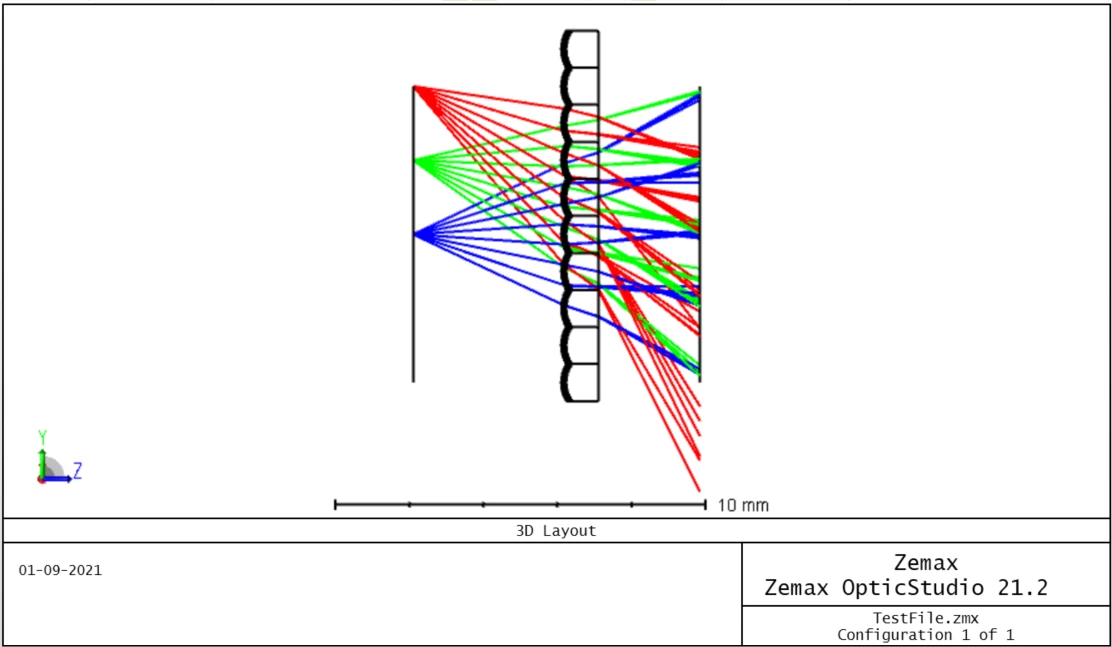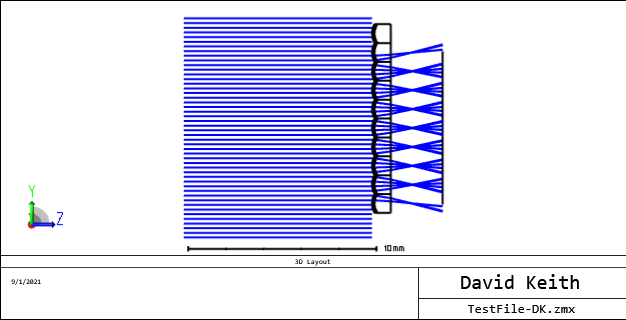Hi,
I’m trying to model lens array imaging using mixed mode (array defined in NSC).
My question is, how valid is the Image Analysis for such a setup? The on-axis field component appears to shape a proper image, but from the layout rays I have a hard time imaging how an actual image is formed (see below picture). When using the off-axis field to make the Image Simulation, the picture appears to have multiple overlays (4).


Second question (perhaps the reason behind my misunderstanding), is how can Microlens Arrays be used to form images. I would think that placing the object and image plane 2f before and after the array would give a 1:1 imaging of the object (f being the single lens focal length). Additionally, I’m guessing some kind of post-processing of the image is necessary to actually make the image resolvable?
Simulation file is attached.
Best regards,
Ahmed


